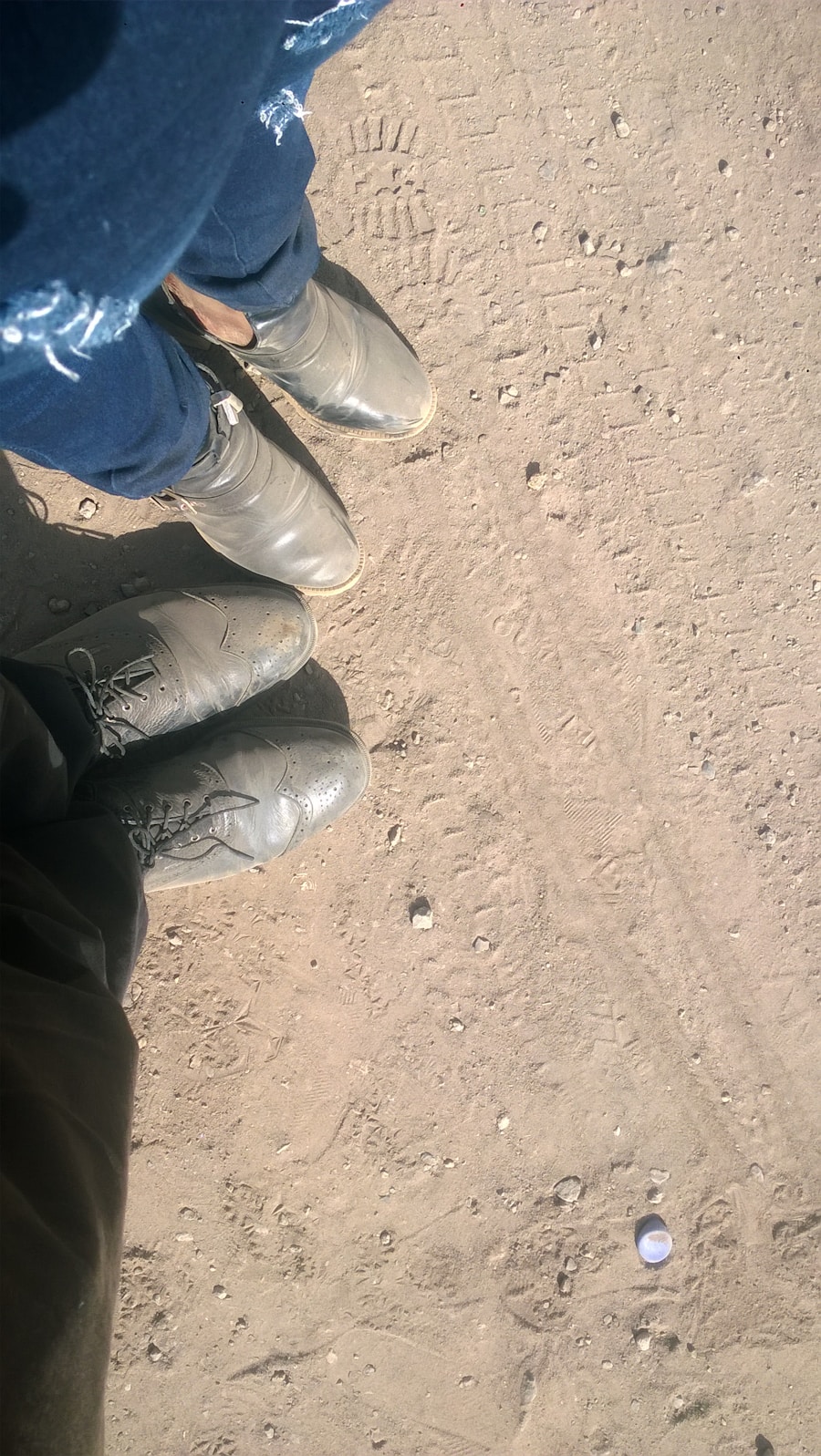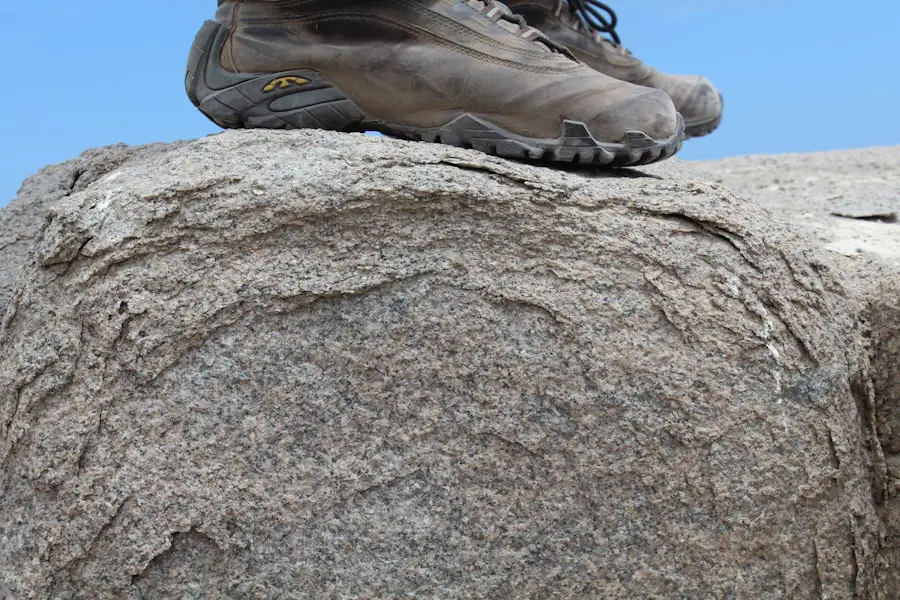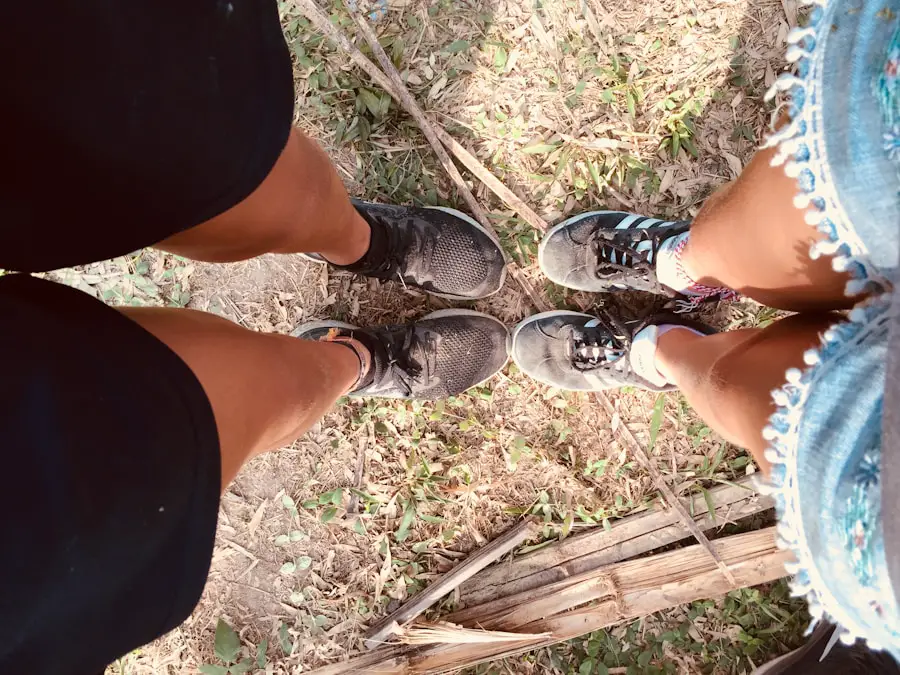When it comes to hiking, the significance of proper fit in footwear cannot be overstated. A well-fitted hiking boot serves as the foundation for a successful outdoor adventure, providing the necessary support and comfort to navigate various terrains. The right fit can prevent blisters, calluses, and other foot ailments that can turn an enjoyable hike into a painful ordeal.
Moreover, a boot that fits correctly enhances stability, allowing hikers to traverse uneven ground with confidence. This stability is particularly crucial when carrying a heavy backpack, as improper footwear can lead to misalignment and increased fatigue. In addition to comfort and stability, proper fit also plays a vital role in overall foot health.
Hiking often involves long hours on your feet, and the wrong size or shape of boot can lead to long-term issues such as plantar fasciitis or other musculoskeletal problems. A boot that is too tight can restrict blood flow, while one that is too loose can cause excessive movement within the shoe, leading to friction and blisters. Therefore, investing time in finding the right fit is essential not only for immediate comfort but also for the longevity of your hiking experience.
Key Takeaways
- Proper fit is crucial for hiking boots to prevent discomfort and injury
- Understanding foot shape and size is essential for finding the right hiking boots
- There are different types of hiking boots, including low-cut, mid-cut, and high-cut options
- When trying on hiking boots, consider wearing the socks and insoles you plan to use while hiking
- Common fit issues like heel slippage and toe jamming can be addressed with proper lacing techniques and adjustments
Understanding Foot Shape and Size
To select the perfect hiking boot, it is crucial to understand your foot shape and size. Feet come in various shapes—some are wide, others narrow, and some have high arches while others are flat. Knowing your foot’s unique characteristics can significantly influence your choice of footwear.
For instance, individuals with wider feet may require boots designed with a broader toe box to avoid pinching and discomfort during hikes. Conversely, those with narrow feet might benefit from boots that offer a more snug fit to prevent slipping inside the shoe. Measuring your feet accurately is another essential step in this process.
Many outdoor retailers provide foot measuring devices that can help determine both length and width. It’s advisable to measure your feet at the end of the day when they are slightly swollen, as this will give you a more accurate representation of your size during extended periods of activity. Additionally, understanding the difference between men’s and women’s sizing is important; women’s boots are often designed with a narrower heel and a different arch support system to accommodate anatomical differences.
Different Types of Hiking Boots

Hiking boots come in various styles, each tailored for specific types of terrain and hiking experiences. The three primary categories are lightweight boots, mid-weight boots, and heavy-duty boots. Lightweight boots are ideal for day hikes on well-maintained trails.
They offer flexibility and comfort but may lack the support needed for rugged terrain or heavy loads. These boots are typically made from synthetic materials that provide breathability while keeping the weight down. Mid-weight boots strike a balance between support and flexibility, making them suitable for multi-day hikes or backpacking trips where you might encounter varied terrain.
They often feature stiffer midsoles for better support underfoot and are constructed from durable materials that can withstand rough conditions. Heavy-duty boots are designed for serious trekkers who tackle challenging trails or carry heavy packs. These boots provide maximum ankle support and are often made from leather or other robust materials that offer excellent protection against the elements.
Trying on Hiking Boots: Tips and Tricks
| Tip or Trick | Description |
|---|---|
| Proper Fit | Ensure the boots fit snugly but not too tight, with enough room for your toes to wiggle. |
| Try Different Socks | Bring a few pairs of socks to try on with the boots to see how they feel with different thicknesses. |
| Walk Around | Take a walk around the store to test the boots’ comfort and support. |
| Check for Pressure Points | Make sure there are no areas of the boot that cause discomfort or pressure on your feet. |
| Consider Terrain | Think about the type of terrain you’ll be hiking on and choose boots with appropriate support and traction. |
Trying on hiking boots is an art in itself, requiring attention to detail to ensure you find the perfect pair. When visiting a store, it’s advisable to wear the same type of socks you plan to use while hiking. This will give you a more accurate feel for how the boot fits with your chosen sock thickness.
Once you have selected a few pairs to try on, take your time to walk around the store. Pay attention to how the boot feels on your foot—there should be no pinching or excessive movement. A useful trick is to perform a “heel lift” test: while standing, try to lift your heel out of the boot.
If your heel lifts significantly, the boot may be too large. Conversely, if you feel pressure on your toes when descending a slope, it may indicate that the boot is too small. Additionally, consider trying on boots later in the day when your feet are slightly swollen; this will help ensure that they remain comfortable during long hikes.
Common Fit Issues and How to Address Them
Even after careful selection, hikers may encounter common fit issues with their boots.
One prevalent problem is heel slippage, which can lead to blisters and discomfort during hikes. This issue can often be addressed by adjusting lacing techniques or using thicker socks for added cushioning.Some hikers find success with heel grips or insoles designed to fill in gaps and provide a more secure fit. Another common issue is toe cramping or numbness, which typically occurs when there isn’t enough room in the toe box. To alleviate this problem, consider choosing a boot with a wider toe box or opting for a half-size larger than your usual size.
Additionally, ensuring that your laces are properly adjusted can help distribute pressure evenly across your foot, reducing discomfort during long treks.
Breaking in Your Hiking Boots

The Importance of Breaking In
The breaking-in process allows the materials of the boot to conform to the unique shape of your foot, enhancing comfort and performance.
A Gradual Approach
To break in your boots effectively, start by wearing them around your home or during short walks on flat surfaces. Gradually increase the duration and intensity of wear over several days or weeks before embarking on longer hikes.
Early Identification of Issues
This incremental approach allows you to identify any potential pressure points or areas of discomfort early on, giving you time to make adjustments or consider alternative footwear if necessary.
Maintaining Proper Fit Over Time
As you continue to use your hiking boots, it’s important to maintain their fit over time. Feet can change due to various factors such as weight fluctuations, age, or even changes in activity level. Regularly reassessing your foot size and shape can help ensure that your boots continue to provide adequate support and comfort.
If you notice any signs of discomfort or instability while wearing your boots, it may be time to reevaluate their fit. Additionally, keeping your boots clean and well-maintained can contribute to their longevity and performance. Dirt and debris can accumulate in the laces and eyelets, affecting how well they secure your foot.
Regularly cleaning your boots with appropriate materials—such as brushes for leather or synthetic fabrics—can help preserve their structure and fit over time.
When to Replace Your Hiking Boots
Even with proper care and maintenance, hiking boots have a finite lifespan and will eventually need replacement. Signs that it may be time for new footwear include visible wear on the soles, loss of tread depth, or significant creasing in the upper material. If you find yourself experiencing discomfort or instability that wasn’t present when the boots were new, it could indicate that they have lost their supportive qualities.
Another factor to consider is how frequently you hike; those who hit the trails regularly may need to replace their boots more often than casual hikers. As a general rule of thumb, if you’ve logged over 500 miles in a pair of hiking boots, it’s wise to start considering replacements. Ultimately, investing in new footwear when necessary will ensure that you continue to enjoy safe and comfortable hikes for years to come.
When it comes to hiking boots, it is crucial to ensure they fit properly to prevent discomfort and potential injuries while on the trail. One helpful article to check out is “Best Time to Travel to Costa Rica: A Guide”, which provides valuable information on planning a trip to Costa Rica and the importance of choosing the right time to visit for the best experience. Just like planning a trip, finding the right fit for your hiking boots is essential for a successful and enjoyable outdoor adventure.
FAQs
What are the key factors to consider when fitting hiking boots?
When fitting hiking boots, it’s important to consider the length, width, and volume of the boot, as well as the overall comfort and support it provides.
How should hiking boots feel when trying them on?
Hiking boots should feel snug but not tight, with enough room in the toe box to wiggle your toes. They should also provide good arch and ankle support.
Should there be any extra space in hiking boots?
There should be a little extra space (about a half inch) between your longest toe and the end of the boot to accommodate for foot swelling during long hikes.
What should I wear when trying on hiking boots?
When trying on hiking boots, wear the same type of socks that you would wear while hiking. This will give you a more accurate feel for how the boots will fit during actual use.
How do I know if hiking boots are the right fit for me?
The right hiking boots should feel comfortable and supportive from the moment you put them on. There should be no pinching or rubbing, and your heel should not lift up when you walk.
